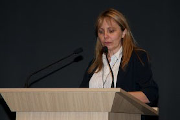teaching:reverse:2018:references
Differences
This shows you the differences between two versions of the page.
| Both sides previous revisionPrevious revisionNext revision | Previous revision | ||
| teaching:reverse:2018:references [2018/12/07 15:25] – [Etudes] blay | teaching:reverse:2018:references [2018/12/16 16:40] (current) – [Généralités] blay | ||
|---|---|---|---|
| Line 13: | Line 13: | ||
| - http:// | - http:// | ||
| by Robert C. Martin | by Robert C. Martin | ||
| + | - [[http:// | ||
| + | - https:// | ||
| </ | </ | ||
| </ | </ | ||
| Line 26: | Line 28: | ||
| < | < | ||
| < | < | ||
| + | | ||
| + | * author = {Verdecchia, | ||
| + | * year = {2018}, | ||
| + | * month = {05}, | ||
| + | * doi = {10.1145/ | ||
| + | * Architectural Technical Debt (ATD) regards sub-optimal design decisions that bring short-term benefits to the cost of long-term gradual deterioration of the quality of the architecture of a software system. The identification of ATD strongly influences the technical and economic sustainability of software systems and is attracting growing interest in the scientific community. During the years several approaches for ATD identification have been conceived, each of them addressing ATD from different perspectives and with heterogeneous characteristics. In this paper we apply the systematic mapping study methodology for identifying, | ||
| + | * From the same author : | ||
| -[[ https:// | -[[ https:// | ||
| * Auteurs : Celal Ziftci, Jim Reardon | * Auteurs : Celal Ziftci, Jim Reardon | ||
| Line 113: | Line 121: | ||
| - Hebig, R., Quang, T. H., Chaudron, M. R. V., Robles, G., & Fernandez, M. A. (2016). The quest for open source projects that use UML. In Proceedings of the ACM/IEEE 19th International Conference on Model Driven Engineering Languages and Systems - MODELS ’16. https:// | - Hebig, R., Quang, T. H., Chaudron, M. R. V., Robles, G., & Fernandez, M. A. (2016). The quest for open source projects that use UML. In Proceedings of the ACM/IEEE 19th International Conference on Model Driven Engineering Languages and Systems - MODELS ’16. https:// | ||
| - [[http:// | - [[http:// | ||
| - | | + | * author = {Alimadadi, Saba and Mesbah, Ali and Pattabiraman, |
| - | - Anas Shatnawi, Abdelhak-Djamel Seriai, Houari Sahraoui, Zakarea Alshara, [[https:// | + | * booktitle = {Proceedings of the 40th International Conference on Software Engineering |
| - | https:// | + | * doi = {10.1145/ |
| + | * isbn = {9781450356381}, | ||
| + | * issn = {02705257}, | ||
| + | * year = {2018}, | ||
| + | * Program comprehension is a necessary step for performing many software engineering tasks. Dynamic analysis is effective in producing execution traces that assist comprehension. Traces are rich sources of information regarding the behaviour of a program. However, it is challenging to gain insight from traces due to their over-whelming amount of data and complexity. We propose a generic technique for facilitating comprehension by inferring recurring execution motifs. Inspired by bioinformatics, | ||
| + | - " | ||
| + | * journal = " | ||
| + | * volume = " | ||
| + | * pages = " | ||
| + | * year = " | ||
| + | * issn = " | ||
| + | * doi = "https:// | ||
| + | * url = "http:// | ||
| + | * author | ||
| + | * keywords | ||
| + | * Object-oriented Application Programing Interfaces (APIs) support software reuse by providing pre-implemented functionalities. Due to the huge number of included classes, reusing and understanding large APIs is a complex task. Otherwise, | ||
| + | - [[ https:// | ||
| + | * Lu Xiao, Yuanfang Cai, and Rick Kazman. | ||
| + | * 2014. | ||
| + | * ACM SIGSOFT International Symposium on Foundations of Software | ||
| + | * 763–766 | ||
| + | - [[http:// | ||
| + | | ||
| + | * 2018 | ||
| + | | ||
| + | * https:// | ||
| </ | </ | ||
| </ | </ | ||
teaching/reverse/2018/references.1544196339.txt.gz · Last modified: 2018/12/07 15:25 by blay
